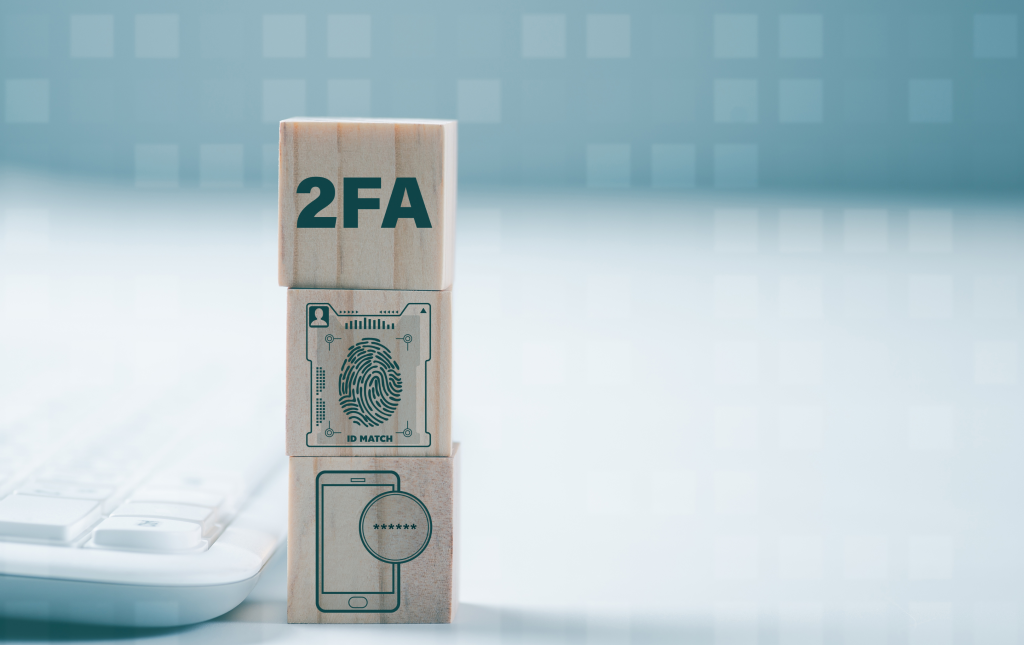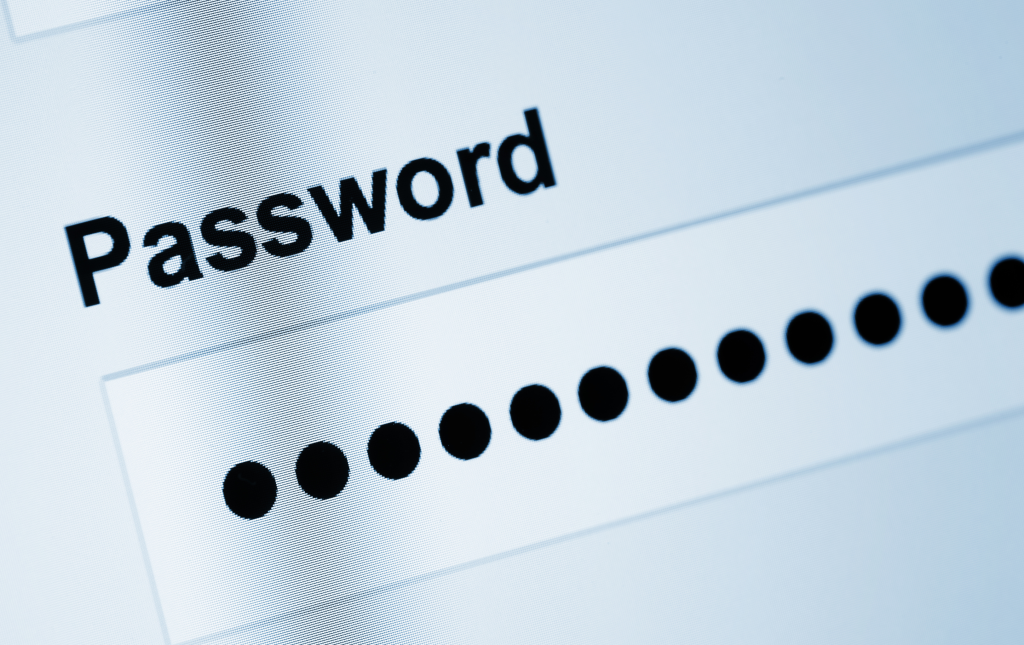In this blog, we’re sharing a handy cheat sheet featuring our top cyber security tips. As technology continues to evolve and scam tactics get more complex, it’s important that we stay up to date with the most effective tips for preventing and managing scams. From adding extra layers of security to your online accounts, to being cautious about what you click, this cheat sheet has you covered!

Set up 2FA/MFA
We’ve placed this tip at the top of our cyber security tips list because we strongly recommend enabling two-factor or multi-factor authentication on your online accounts whenever possible.
In addition to your password, 2FA and MFA offer an extra layer of security that a scammer would have to get through in order to access your accounts. So, if someone was to get a hold of your password and other login details, your accounts are still ultimately protected.
These extra layers of security can include all sorts of methods. For example fingerprint/facial scans, verification codes sent via email, text or authenticator apps, confirmation on another device, or even a passkey!
Unfortunately, not all online accounts provide 2FA or MFA. However, the most important accounts, typically containing sensitive information and personal data, are likely to offer these security measures. These accounts often include social media, online banking, email, and cloud services.

Improve your passwords
Although adding a second layer of security, as mentioned above, is an option, it’s crucial to ensure that your password—the first layer of defence—is strong. This will provide you with the best possible cyber security.
To begin with, we’d highly suggest making unique passwords for each of your online accounts. This means if one account is compromised, your other accounts won’t be at risk. To check if a password is compromised head to haveibeenpwned.com and enter your login details. If indeed one of your passwords is compromised, it’s time for an immediate update!
When making a new password, you want it to be long and strong to thwart off scammers. We’d suggest using at least 12 characters, a mix of lower and uppercase letters, numbers and icons. You can also try a passphrase, which is a random mix of words that have no relation to each other. For example, flewcatbookthroughthere.
Lastly, one of our final cyber security tips for your passwords would be to not save important login details to your web browser when prompted. When you store a password in a browser, it is often saved in a predictable location within a folder, making its destination potentially accessible to anyone. There is also no unique master password or key, simply the device login. Yes, the passwords themselves are encrypted, but the encryption key is kept close by. For example, it’s like a securely locked door, with a key conveniently hidden under the mat. Similarly, if you save passwords on your device, anyone who gains access to it can easily find your stored login details and access your online accounts.

Stay up-to-date
To ensure you have the best security available, it’s important that you stay up-to-date with your device’s available updates. Whether that’s updates to your software or operating system.
This is crucial to our cyber security tips. Because, software and operating system updates fix vulnerabilities in older versions, providing better protection against threats and safeguarding your data.
To check your available updates on a Mac, click on the Apple symbol in the top left of your screen, click Systems Settings… then choose General in the sidebar. After that simply click Software Update to see all available updates. For more details head here.
To check if you have any updates to make on a Windows device, go to Start, click Settings then choose Update & Security. After that, click Windows Update and select Check for updates to see all available updates.
Please note, we would recommend that you avoid clicking on pop-ups on your device’s screen prompting you to update. Update within the app or settings instead.

Think before you click
Before you click any links, buttons or images, pause and have a think about their credibility. Often scammers will use enticing offers or create a sense of urgency to get you to click without thinking. But don’t let them fool you, you’ve always got time to check the legitimacy of a link!
The simplest piece of advice we can give you is to never click on any provided links in an unsolicited email, text or social message from an unknown sender. There is a high likelihood that upon clicking these links, you may be directed to an untrustworthy site. What you can do is hover your cursor over links to view the destination URL. If it doesn’t match what the sender claims, report and delete the message. We also recommend applying this technique to unsubscribe buttons. Scammers often hide harmful links behind these buttons, anticipating that you’ll want to avoid future emails if you receive an unexpected one.
Some scam emails will also use an entire image as their content, which links to a malicious site. To check if this is the case, hover your cursor over the email. If the hand symbol appears, indicating the email is one large image, it’s likely a scam.
Additionally, when browsing the web, try to avoid clicking on sponsored listings. Though rare, they can sometimes lead to harmful websites.

Securely surf the web
Many scammers take advantage of the World Wide Web’s anonymity, widespread audience and lack of regulation compared to other platforms. So it’s important that you know how to surf the web safely and securely.
A key rule to follow when browsing online is to avoid public Wi-Fi networks, as they are often unsecured. This is particularly crucial when filling in sensitive information online. If you must use public Wi-Fi, be sure to log out of any unnecessary accounts to protect your important data and privacy.
When browsing online, it’s also important to check that your connection is secure. For instance, in Google Chrome, simply click the security status icon to the left of the web address. This will provide you with details about the website’s security, as well as additional ‘About’ information, including source details, image data, and topic summaries for the page you’re visiting.
Additionally, you can try getting a helping hand from protective software such as a VPN, web extension or anti-virus. VPNs, for example, can make your online presence nearly untraceable by using encryption to create a secure connection over an unsecured network. In particular, we recommend ExpressVPN.
Make sure you have anti-virus software, and try to take advantage of its built-in ad blocker to intercept unwanted software and receive warnings about untrustworthy websites. Oh, and if you don’t already have an anti-virus, we believe Malwarebytes is the best option available!

Verify your senders
Unfortunately, due to advancements in technology, it’s easier than ever for scammers to impersonate individuals and businesses by using techniques such as number spoofing, phishing emails and AI-generated voices. That’s why you should always verify the identity of your senders.
If you receive an unexpected email claiming to be from a reputable company, check that their email domain (which comes after the @ symbol) matches their website domain (which comes before .co.nz or .com) by doing a quick google search.
In another case, if you receive a call from an unknown number claiming to be from a person or company and they request personal details or payment of some form, politely hang up. Afterwards, look up the company’s contact details online and call back using that information then you can verify the legitimacy of the first call. If the caller claims to be someone you know, hang up and call them back using the contact details stored on your device.
Scammers also often use social media to impersonate others. Therefore, if you receive a message from someone on social media, it’s important to verify their profile’s legitimacy before interacting. Some notable signs of a fake profile include it being recently created, lacking personal information, having suspicious connections, featuring low-quality content, and more.
With these cyber security tips on hand, you should be able to keep yourself safe online and protect yourself from scammers. However, scam techniques are continually evolving with technology, so it’s crucial to exercise caution at all times. If you feel overwhelmed by the constant updates on scam methods and cybersecurity tips, let us handle it for you! Our GeekSafe™ service allows our experts to identify scams and keep you informed about urgent scam updates. Want peace of mind? Learn more about GeekSafe™ today!